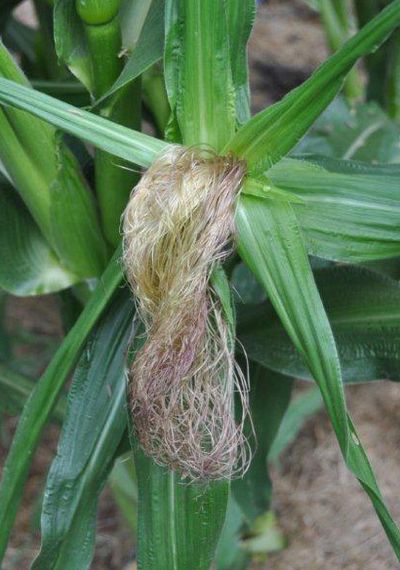Keep an eye on tomatoes, corn in garden

This year’s vegetable growing season didn’t exactly start with a bang. Corn and tomatoes struggled in the cold, rainy weather. More than a few gardeners replanted corn multiple times before the weather finally turned warm.
Tomatoes have recovered from the cold nicely and when the early hot weather boosted the night temperature above 55 degrees regularly, the plants really took off. Those that were ready began setting fruit. The heat hung around so that the late bloomers had time to catch up. Cherry tomatoes are already producing, and the bigger tomatoes should be ripening by the middle of August.
As the tomatoes begin ripening, watch out for blossom end rot and water cracking. Blossom end rot and water cracking are both caused by uneven watering. Blossom end rot is a calcium deficiency caused by changes in water availability to cells and appears as a brown leathery patch on the bottom of the ripening tomato. Water cracking appears as a series of scars around the top of the fruit. When the tomato gets too much water it swells and bursts just a bit. The cracks usually heal over but the fruit ends up looking rough.
To prevent these problems, adjust watering schedules so the soil stays consistently moist. The rising temperature and large plants mean more water is needed. If you are using an automatic sprinkler system, increase the time and frequency to every other day for 20 to 30 minutes. If you don’t have an automatic system, set up a soaker hose with a battery powered timer and set the time for 30 to 45 minutes to allow the water to go deep.
A lot of corn wasn’t very tall by the first part of July, but with the early heat it made up for lost time quickly.
Corn is in the grass family and as such is pollinated by the wind. The tassel at the top of plants disperses pollen into the wind. Down on the stalk, the silks emerging from the new ears catch the grains of pollen and move them down a long hollow tube to the new corn kernel. Once the kernels are pollinated, they begin to grow into the familiar ear.
If there wasn’t enough wind or the corn plants were too scattered, the result is ears with lots of missing kernels. This is why it is important to plant corn in blocks rather than single rows. Be sure to keep the soil evenly moist and fertilize as the ears begin forming.
Once the silks appear on the tips of the new ears, you can figure in 21 days the ears of corn will be ready to eat. Mine had silks out on Aug. 2 so on Aug. 23 I can plan my annual corn feast. To double check, pull the husk apart at the tip, if it has full kernels, it is ready to harvest. Get that pot of water boiling and bring out the butter!